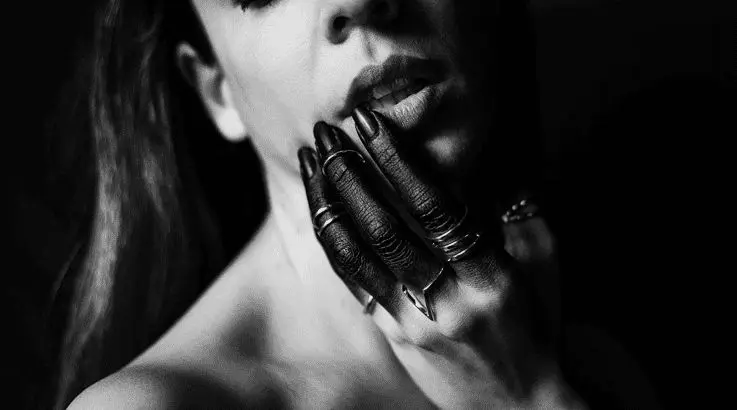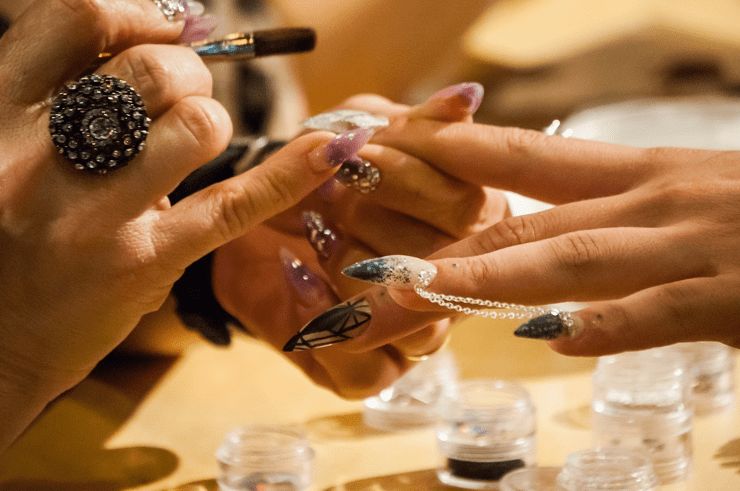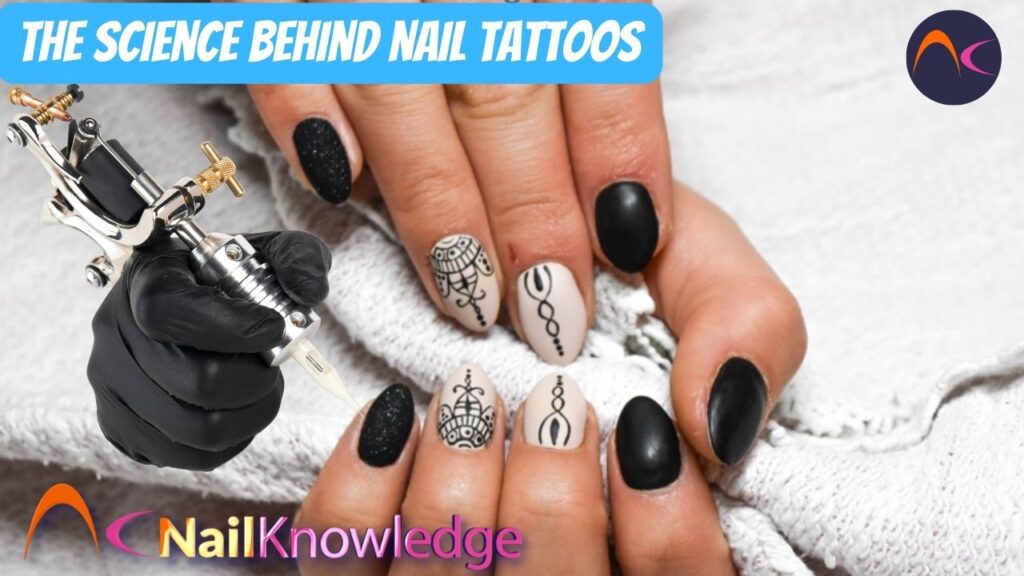Nail art has evolved significantly in recent years, surpassing traditional manicures and pedicures. Tattoos have become a captivating trend, growing with heightened artistic expression. These miniature masterpieces empower individuals to express their distinctiveness through self-expression. But have you ever wondered about the scientific principles behind them? What makes them so resilient?
Neste guia abrangente, vamos nos aprofundar na ciência intrigante das tatuagens de unhas, apresentando insights de Os melhores tatuadores da Califórnia e apoiado por pesquisas científicas completas.
Origens das tatuagens nas unhas
Emergindo de uma antiga arte em unhas traditions, tattoos, alternatively known as decals or wraps, have historical ties to civilizations such as the Chinese, Egyptians, and Indians. These cultures adorned their nails with diverse materials for aesthetic purposes. However, the contemporary tattoo trend emerged in the late 20th century, creatively meeting the demand for intricate and detailed designs.
Expressando a individualidade
O principal objetivo das tatuagens de unhas é a capacidade de expressar a individualidade. Seja optando por um padrão geométrico minimalista, um desenho floral animado ou um retrato meticuloso, elas oferecem uma plataforma para que os indivíduos exibam sua personalidade, interesses e criatividade em uma tela compacta, porém influente. A variedade de desenhos garante uma tatuagem de unha adequada para cada estilo, humor e ocasião.

Comunidade e tendências
O aumento da mídia social influenciou o crescente apelo das tatuagens de unhas. O Instagram e o Pinterest são galerias virtuais onde artistas e entusiastas exibem suas últimas criações. Eles inspiram outras pessoas a explorar diversos estilos e técnicas.
As tendências em tatuagens de unhas frequentemente refletem os movimentos da moda e da arte, destacando a natureza dinâmica dessa avenida de autoexpressão em constante evolução.
Entendendo os conceitos básicos
As tatuagens de unhas representam uma fascinante interseção de arte e ciência, ampliando os limites da estética tradicional das unhas. Diferentemente das tatuagens esmalte tradicional., which forms a solid layer upon drying, nail tattoos utilize a unique approach by employing ink that adheres to the nail’s surface.
At the heart of nail tattoos is the formulation of specialized inks designed to bond effectively with the keratin structure of the nails. These inks often consist of pigments suspended in a liquid base, carefully crafted to ensure optimal adherence and durability. Artists choose them for their vibrancy and ability to maintain integrity on the nail’s surface over time.

Materiais e técnicas
As tatuagens de unhas podem ser feitas de várias formas, desde decalques e adesivos com água até desenhos intrincados pintados à mão. Aqui estão algumas técnicas e materiais populares usados para criá-las:
- Water Decals: The most common type of nail tattoo. They are a thin film that transfers onto using water. The process involves submerging the decal in water, placing it into position, and sealing it with a top coat to achieve a seamless result.
- Nail Stickers: Pre-designed adhesive decals for direct application. Available in various shapes, sizes, and patterns, they offer limitless possibilities for customization.
- Gel Transfers: A design placed onto the nail using a special gel or adhesive. Employing this method leads to a tattoo that is long-lasting and more resilient.
- Desenhos com tinta: Para quem busca unhas exclusivas e personalizadas, os desenhos com tinta oferecem um toque único. Artistas habilidosos podem criar obras de arte complexas e detalhadas.
Aplicação de tatuagem nas unhas
A aplicação de tatuagens nas unhas é um processo preciso, baseado nos princípios da ciência:
- Surface Preparation: Nail surface preparation before applying them is very important. It involves removing oils that could interfere with the application’s efficacy.
- Mecanismo de aplicação: A aplicação usada nas tatuagens cria uma forte ligação com a unha, garantindo uma conexão segura, porém suave.
- Air Removal: Research-based techniques are employed to eliminate trapped air bubbles during application, ensuring a seamless, professional finish contributes to the design’s longevity.
- Top Coat Protection: Many nail tattoos require a scientifically formulated top coat, which enhances the design’s vibrancy and adds a protective layer, extending the design’s lifespan.

A longevidade das tatuagens de unhas
Vários fatores influenciam a longevidade das tatuagens nas unhas.
- Water Resistance: Nail tattoos resist exposure to water. It prevents smudging and lifting of the design, even in moist conditions.
- Flexibility: The vinyl or polymer material is sufficiently flexible to conform to the nail’s shape sem rachaduras ou descascamento, mesmo sob movimentos naturais.
- Desgaste: O manuseio cuidadoso pode aumentar significativamente a vida útil das tatuagens nas unhas.
- Top Coat’s Protective Role: The formulation of top coats plays a pivotal role in protecting nail tattoos from chipping, fading, or scratching, ensuring a design that endures.
Reconstrução do leito ungueal
Medical tattooing serves to help restore a patient’s physical well-being while aiding in their psychological recovery from the impacts of disease, surgery, or trauma. It becomes essential with surgically removed nails [1].
Normalmente, a tatuagem médica é um processo que requer várias sessões para integrar nuances de cores precisas e obter um resultado extremamente realista. Envolve a colaboração com um artista médico qualificado que possua experiência substancial nesse campo especializado.
The precise and safe implementation of the treatment depends on the tattoo artist possessing a thorough grasp of specific techniques and adeptly handling the necessary materials. Frequently, unsatisfactory results arise due to the operator’s lack of experience and knowledge of the process employed during the treatment.
A importância e o potencial do uso de tatuagens para fins médicos tornam-se evidentes quando elas podem aprimorar ou refinar os resultados obtidos com a cirurgia plástica. Isso pode ajudar a contornar a necessidade de procedimentos invasivos adicionais.
A aplicação da tatuagem médica para restaurar a estética do corpo leito ungueal marca um avanço significativo, ressaltando a versatilidade dessa técnica. Com a supervisão de um médico e artista habilidosos, o paciente pode restaurar a sensação de integridade física sem enfrentar riscos à saúde.
Conclusão
Nail tattoos represent a harmonious mix of artistic expression and scientific creativity, transcending mere fashion views. Continual research and innovation have led to the development of exceptional and enduring tattoos. With this trend’s evolution, we can expect future breakthroughs in materials and techniques, enhancing their accessibility even further.
The next time you find yourself admiring the detailed nail art gracing your or someone else’s fingertips, take a moment to acknowledge the inventive prowess that breathes life into these designs. Tattoos are a remarkable testament to the fusion of creativity and scientific advancement within beauty and self-expression.
Referências
- Alberto Renzoni, Antonia Pirrera, Alessandra Lepri, Paolo Cammarata, Rita Molinaro and Alessandro Dalla Vedova. Medical tattooing, the new frontiers: a case of nail bed treatment (2017). — DOI: 10.4415/ANN_17_04_10


